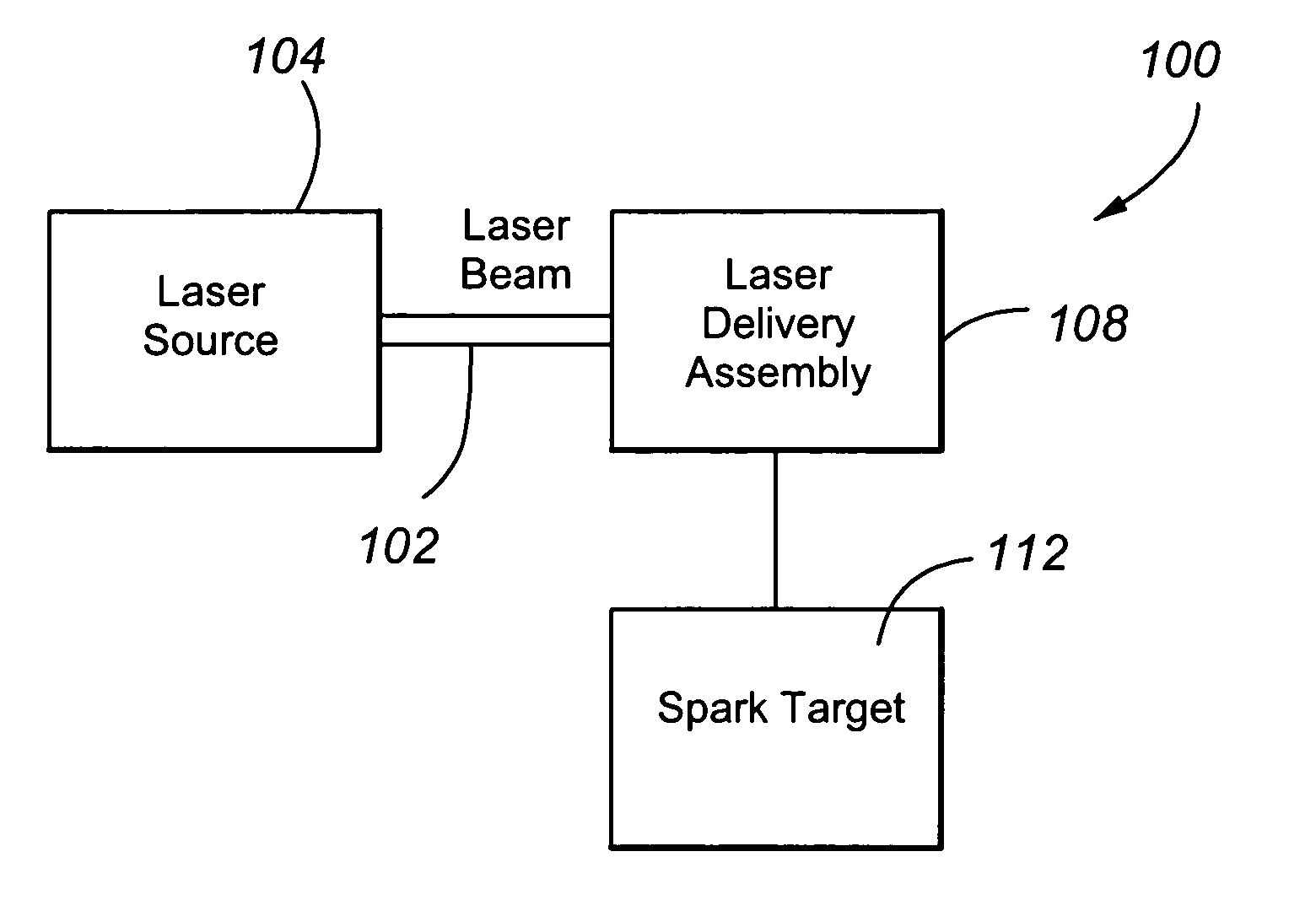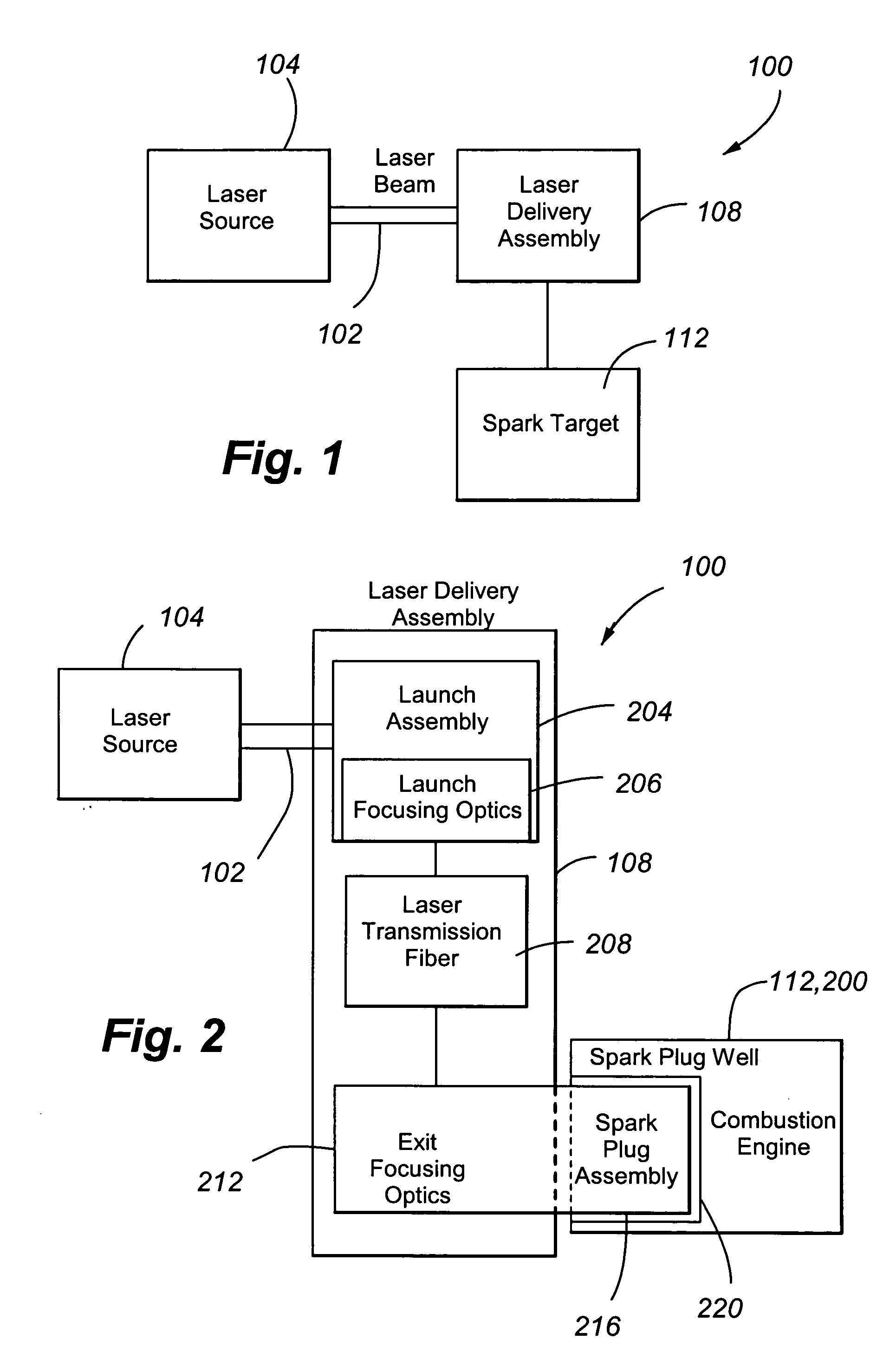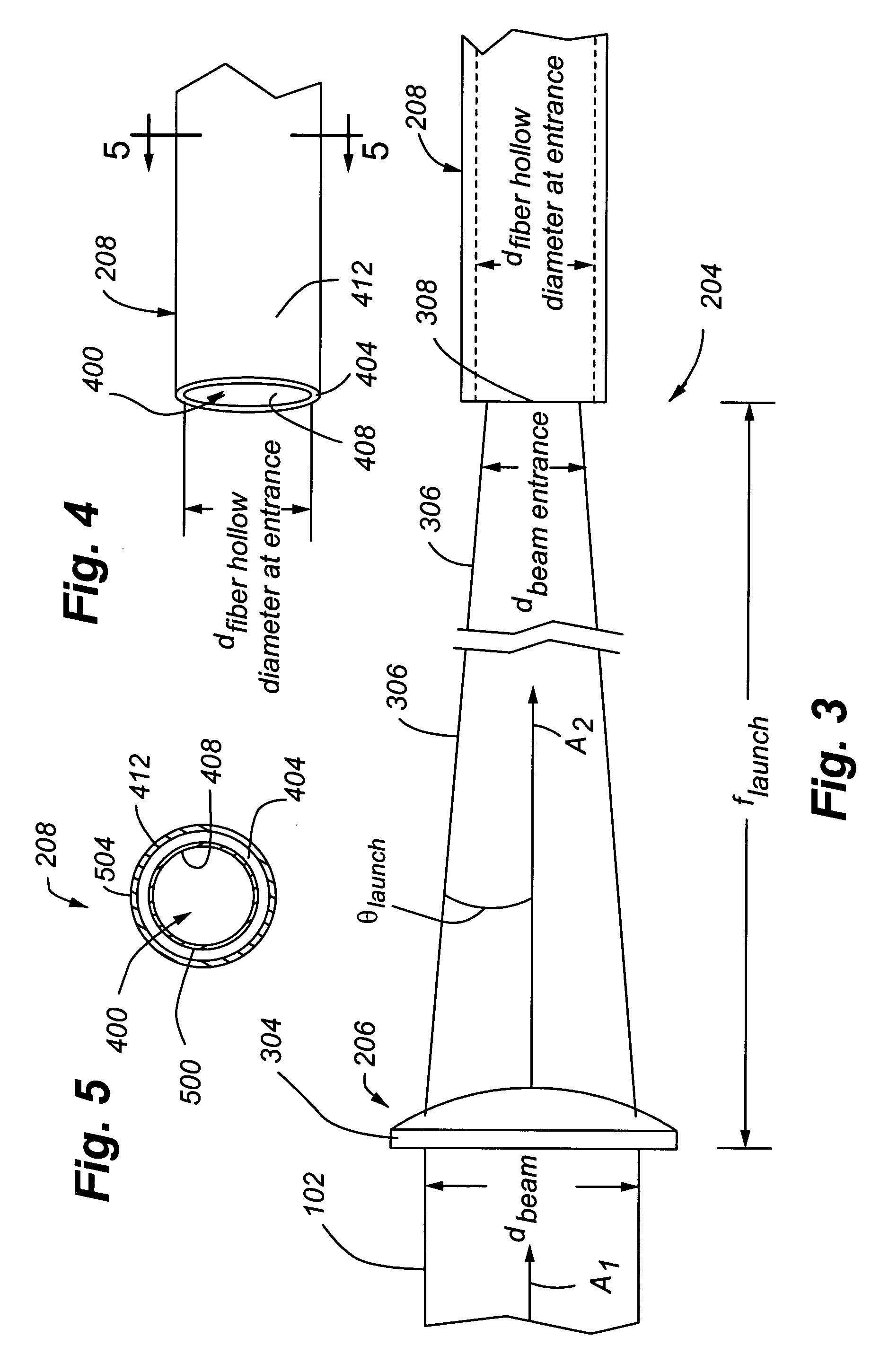Optical diagnostics integrated with laser spark delivery system
a laser and laser technology, applied in the direction of optical radiation measurement, instruments, spectrometry/spectrophotometry/monochromators, etc., can solve the problems of cylinder pressure and mixture density in modern engines, affecting the efficiency of laser spark generation, etc., to achieve the effect of reducing early flame growth and facilitating spark creation with laser
- Summary
- Abstract
- Description
- Claims
- Application Information
AI Technical Summary
Benefits of technology
Problems solved by technology
Method used
Image
Examples
Embodiment Construction
[0052]FIG. 1 illustrates a spark delivery system 100 in accordance with embodiments of the present invention. The system 100 generally includes a laser source 104 in optical communication with a laser delivery assembly 108, which in turn is in optical communication with a spark target 112. The laser source 104 provides a beam of laser light 102 to the laser delivery assembly 108. In order to provide a desirable launch, a laser source 104 with a relatively high spatial quality is desirable. It is estimated that a laser source 104 with a spatial quality M2 parameter of less than about 10 is required. In accordance with embodiments of the present invention, and by way of example and not limitation, a laser source 104 such as a Continuum 8050. Nd:YAG laser has been found to provide an acceptable laser beam 102 for sparking. In accordance with embodiments of the present invention, and by way of example and not limitation, a wavelength of 1064 nm has been found sufficient for sparking; ho...
PUM
 Login to View More
Login to View More Abstract
Description
Claims
Application Information
 Login to View More
Login to View More - R&D
- Intellectual Property
- Life Sciences
- Materials
- Tech Scout
- Unparalleled Data Quality
- Higher Quality Content
- 60% Fewer Hallucinations
Browse by: Latest US Patents, China's latest patents, Technical Efficacy Thesaurus, Application Domain, Technology Topic, Popular Technical Reports.
© 2025 PatSnap. All rights reserved.Legal|Privacy policy|Modern Slavery Act Transparency Statement|Sitemap|About US| Contact US: help@patsnap.com



